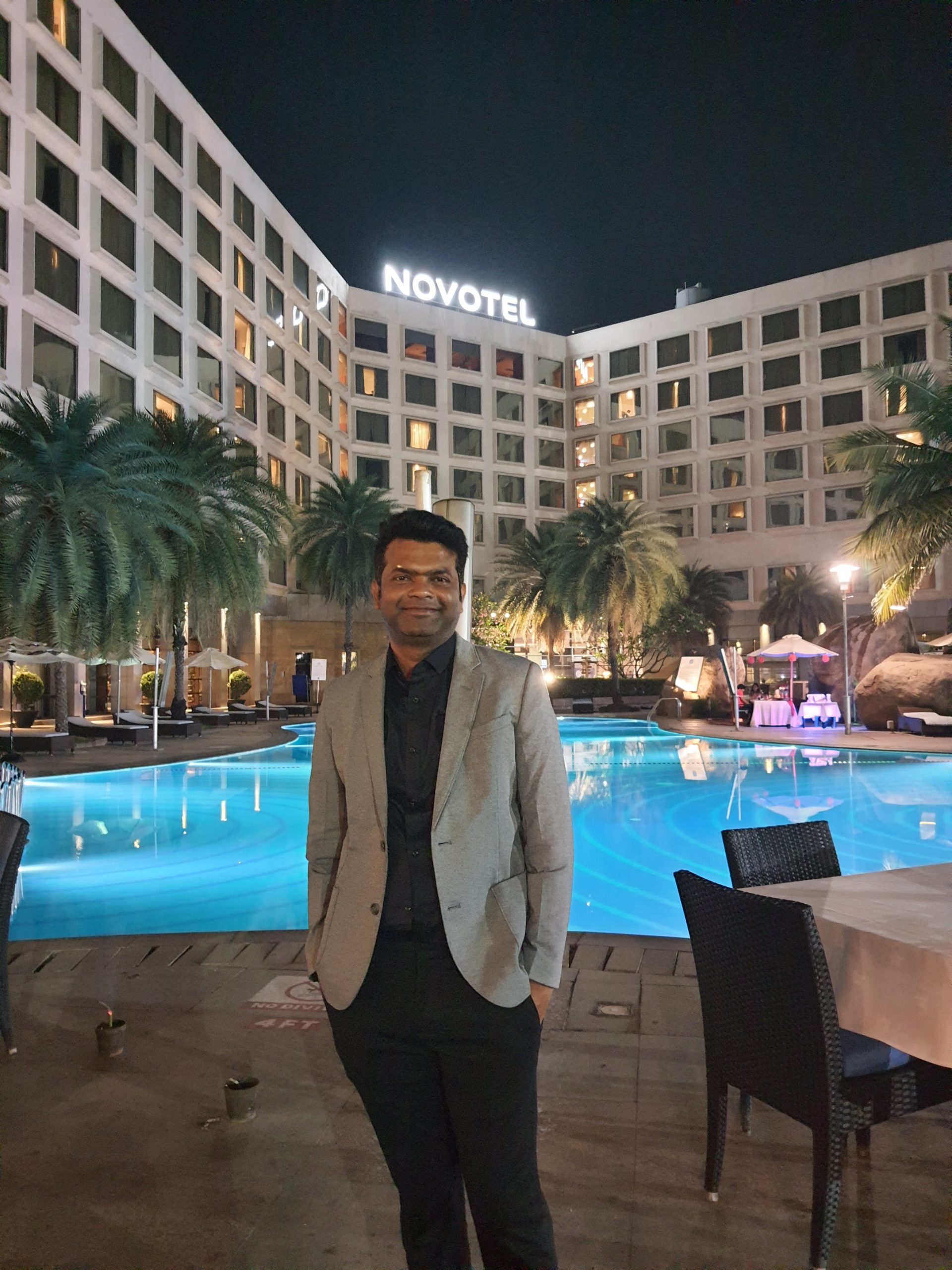(August 3, 2022) The road winding through the lush landscape of orchards leads us to the main chowk of Malihabad, the centuries-old home of mangoes. My phone rings and a soft-spoken man on the other end gently enquires, "Where have you reached?" I tell him I'll be at the chowk in 10 minutes. As soon as the car takes a U-turn at the chowk, I see Padma Shri Kaleem Ullah Khan standing on the edge of the road, waiting for the car. Clad in a crisp white kurta pyjama with a grey half jacket and a cap, he greets me in a salaam, "I thought of coming here myself to greet you." The gesture speaks of his humility and saadgi (simplicity). The Mango Man of Malihabad stands true to his moniker, presenting me with his favourite fruit as soon as I enter his home. "I kept this for you." Stunned at the size of the mango that must be weighing more than 1 kg, I ask him, "Is this from your orchard?" He smiles. "You should have come in May, that's the best time to see the orchard in its full glory - with all the varieties hanging down." He
all the varieties hanging down." He pulls me out of my disappointment adding that there is still a handful to see.
The grey beard and wrinkles on his face tell a story but his eyes light up talking about mangoes - his passion and true love. "Looking at my fascination and connection with mangoes, one of my friends wrote, Aashiq bhi main, mashooq bhi main (I am the lover and the beloved). It is true," he chuffs. This love started in 1987 when Khan began grafting on a 120-year-old tree. Thirty-five years later, he has given India over 300 varieties of mangoes. "I have a connection with the tree. It let me work on it, and helped me fulfil my destiny," he adds. The decades of experimentation have earned him a reputation in the horticulture world - with varieties like Aishwarya, Sachin, and NaMo - all named after celebrities. "I often find the qualities of these personalities in the fruit," he grins.
[caption id="attachment_27642" align="aligncenter" width="545"]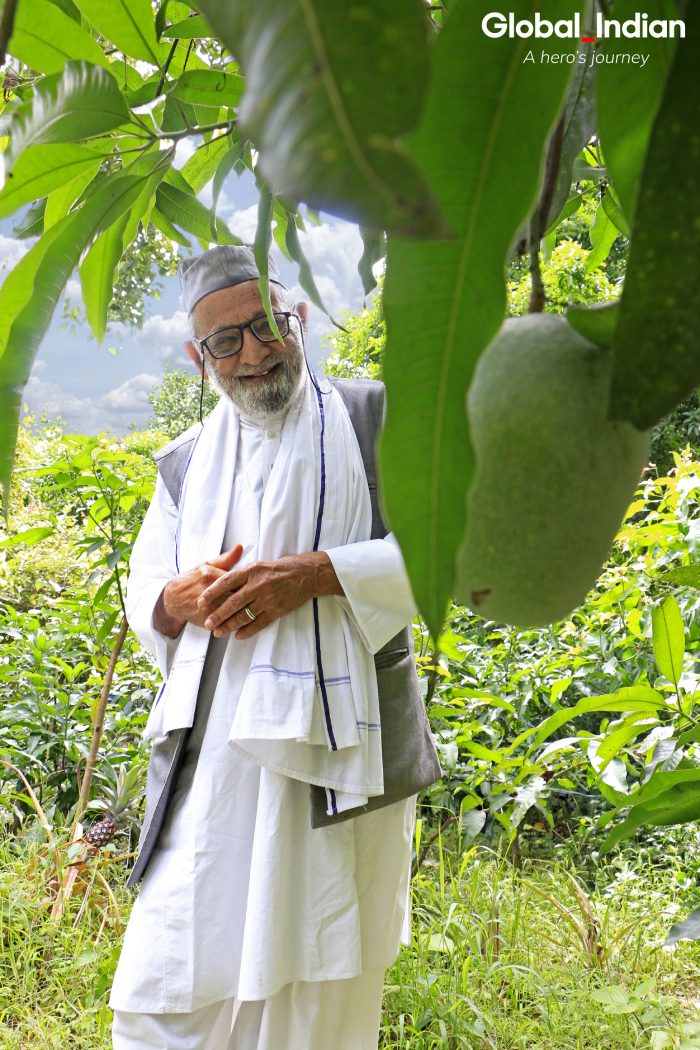 Kaleem Ullah Khan at his mango orchard in Malihabad. (Photo: Kinshuk Mehta for Global Indian)[/caption]
Kaleem Ullah Khan at his mango orchard in Malihabad. (Photo: Kinshuk Mehta for Global Indian)[/caption]
Introduction to the world of grafting
His great grandfather, who arrived in Malihabad in search of a better life, settled amid the lush, green mango orchards that became home to the Khan family. Having failed his seventh class, the 1940-born ran away from home to Jhansi - to find solace in his grandmother's lap and save himself from his father's whip. Months later he returned quietly to join his father in the family business. At 17, he began grafting on a tree in one of their orchards. A concept that had not existed for him until then suddenly came to fruition. "I don't know how the idea came to me." He raises his hand to gesture, "This is all His doing. I was illiterate and a juvenile but He put this idea in me. It was a miracle done by the Almighty," says the man who was conferred with the Padma Shri in 2008 for his contribution to horticulture.
Now 82, Khan often finds it hard to remember the details. "I can't recall the two varieties that I started with, but I grafted seven different varieties on one tree," he smiles. The tree was lost due to incessant rains and his eyes glaze with sadness as he recalls. "I tried to save it but it dried up. I took it as a sign from God that this wasn't meant to be," says Khan as he looks at into the distance as if still remembering his old friend. "Aaj bhi vo jagah khaali padhi hai. Ped sookh gaya lekin mere dimaag mein vo ped badhta raha (That piece of land is still empty. The tree dried up but it kept growing in my mind)."
[caption id="attachment_27643" align="aligncenter" width="577"]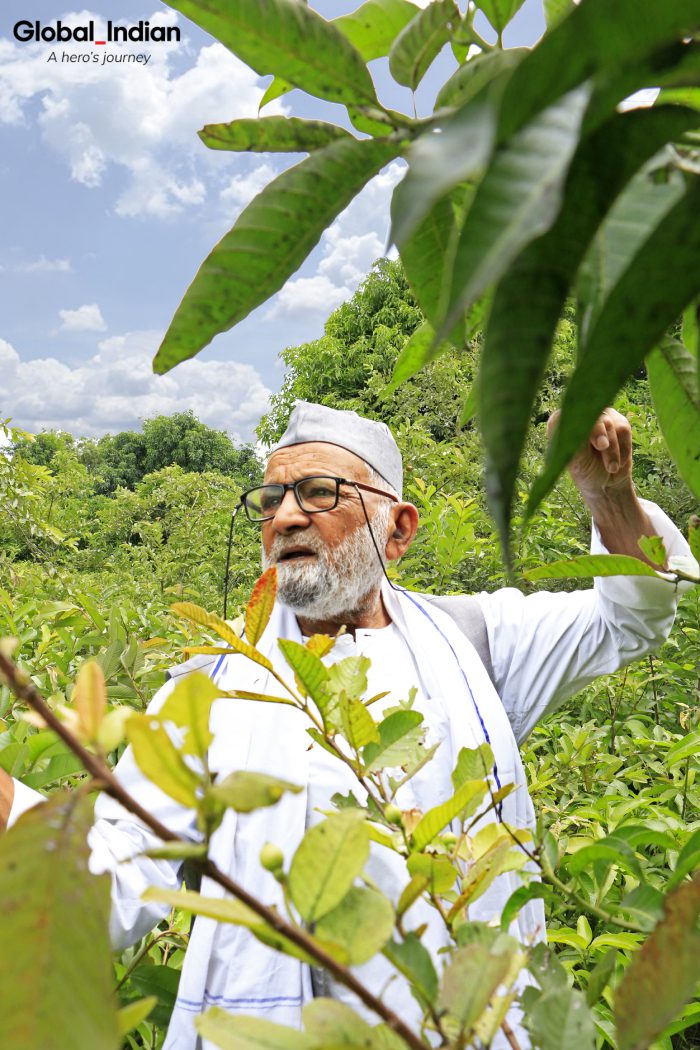 Kaleem Ullah Khan grows 300 varieties of mangoes. (Photo: Kinshuk Mehta for Global Indian)[/caption]
Kaleem Ullah Khan grows 300 varieties of mangoes. (Photo: Kinshuk Mehta for Global Indian)[/caption]
Though the tree spread its roots across his mind and heart, like most humans, he became embroiled in the humdrum of daily life – of making ends meet. "I had no money and did every possible work - from carrying mango baskets on my head to manually working the water turbine. It was a tough time," says Khan while wiping his face from gamcha. After years of hardwork, Khan found sukoon (peace) in 1987 and returned to his first love - grafting - after buying an orchard from a close aide in Bhopal. "I had the time and some money to do what I loved and it seemed like a perfect place to begin grafting, especially with that old tree in the middle. He’s my favourite. I love him and he loves me back," he avers.
A craft that became a passion
At the centre of his 4-acre orchard stands a 120-year-old tree that bears 300 varieties of mangoes, a miracle made possible by Khan. "It's a tree, an orchard and the only college of mangoes in the world." Each year, hundreds, including school kids, scientists, researchers, and admirers flock to Khan's orchard for the spectacle. "The designs, textures, sizes and colours on the tree are a vision in itself," chimes in his daughter-in-law who echoes Khan's love for the mangoes.
[caption id="attachment_27644" align="aligncenter" width="602"]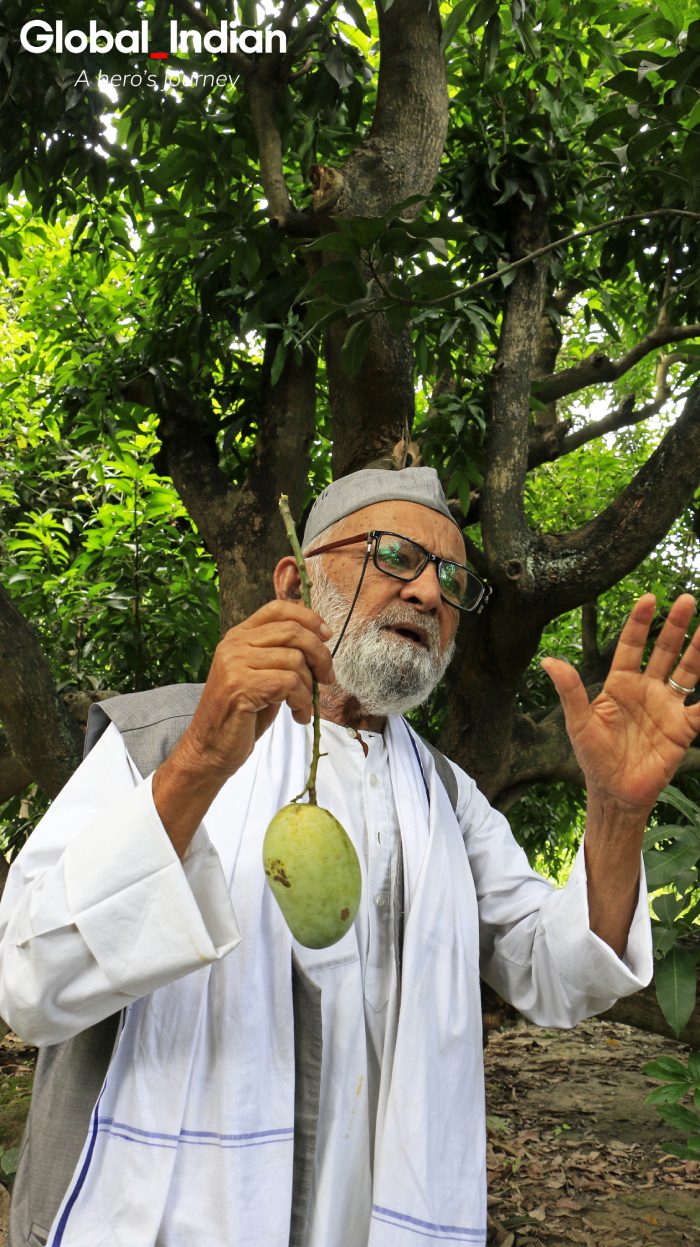 Kaleem Ullah Khan in front of his favourite 120-year-old tree. (Photo: Kinshuk Mehta for Global Indian)[/caption]
Kaleem Ullah Khan in front of his favourite 120-year-old tree. (Photo: Kinshuk Mehta for Global Indian)[/caption]
"He isn’t bothered about making money. Instead, he wants people to see the varieties and understand what can be done to something as simple as a mango," says Shirin stating that they don't sell mangoes. The fruits are gifted to visitors instead. "He has dedicated his entire life to this. Despite getting many offers from other countries including Dubai, he refused to work for them. He wanted to do something on his own land."
Khan's work has found prominence abroad as well as back home. In 1999, his skill caught the attention of the then President KR Narayanan, who asked for one of his trees to be planted in the Rashtrapati Bhawan. Excited, he chose a six-year-old tree on which 54 varieties of mangoes had been grafted. But sending a tree with its roots intact was a herculean task. The idea troubled him for weeks but after some pondering, he used the water to get the tree out of the soil - a practice no one had used before.
"I wanted to take out the tree from the soil in a way that resembles a mother putting a baby to sleep while feeding milk, and the baby falls asleep and the bottle is removed and the baby doesn't even notice." Emphasising the power of divine intervention, he says that he could see a map in his mind. "I knew exactly how much and where to dig that would not harm the tree at all."
[caption id="attachment_27645" align="aligncenter" width="556"]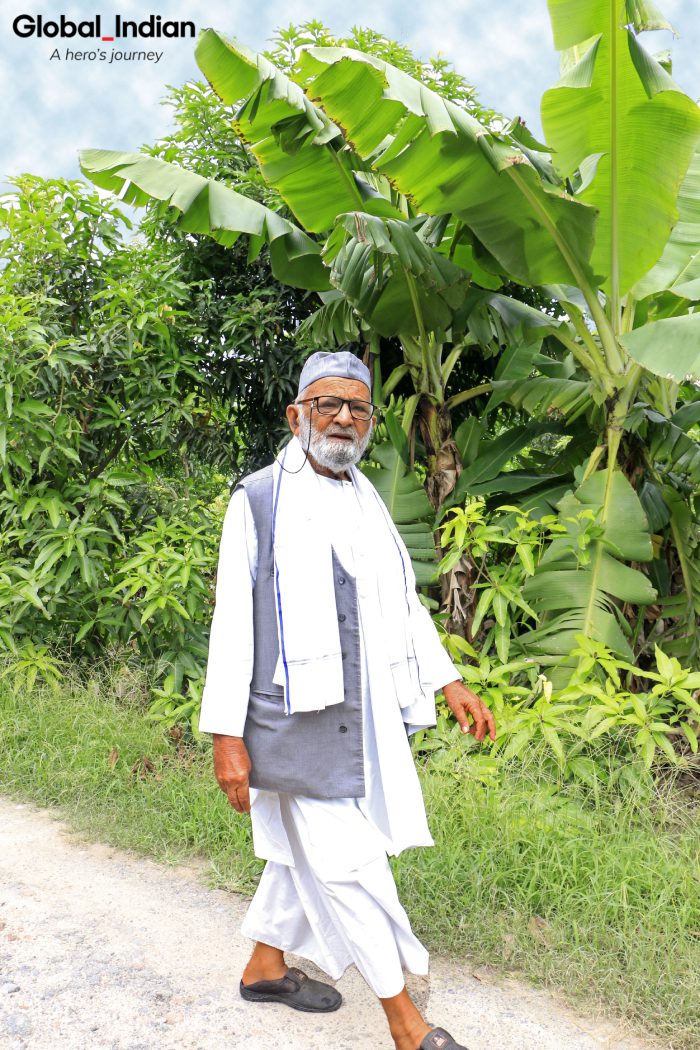 Padma Shri Kaleem Ullah Khan has put Malihabad on the global map. (Photo: Kinshuk Mehta for Global Indian)[/caption]
Padma Shri Kaleem Ullah Khan has put Malihabad on the global map. (Photo: Kinshuk Mehta for Global Indian)[/caption]
For 35 years, his orchard has been his sanctum, and he politely invites me to revel in it - an offer no one can decline. He leads the way to his own sacred haven, stopping en route to inspects the leaves through his thick glasses. He looks carefully at the flowers, caresses the mangoes like a baby, and even cribs about monkeys stealing his favourite mangoes from the trees. The love and affection are palpable. "This is Totapuri, the one that you find in Delhi during the start of the season," he says as he plucks me a ripe mango. "You won't find such huge mangoes anywhere," he beams proudly. Ask him about the secret behind the magnitude of the fruit, and pat comes the reply, "It's a lot to do with the soil, and how you tend to a tree with love."
The tree that bears 300 varieties of fruits
He loves his trees but his connection with the 120-year-old tree goes deeper than its roots in the soil. Making his way through the wet trail (it’s the monsoon), he takes me to his beloved tree. Over a century old, the branches have sprawled over several meters providing a canopy of distinct green leaves. With branches thick as tree trunks, this old friend has surrendered itself to Khan to help him create marvels in the world of horticulture. "I have asked many scientists and researchers to study its sap (tree blood as he calls it), to understand why and how this works. If you don’t ask why and how, there can be no evolution,” Khan says.
[caption id="attachment_27646" align="aligncenter" width="537"]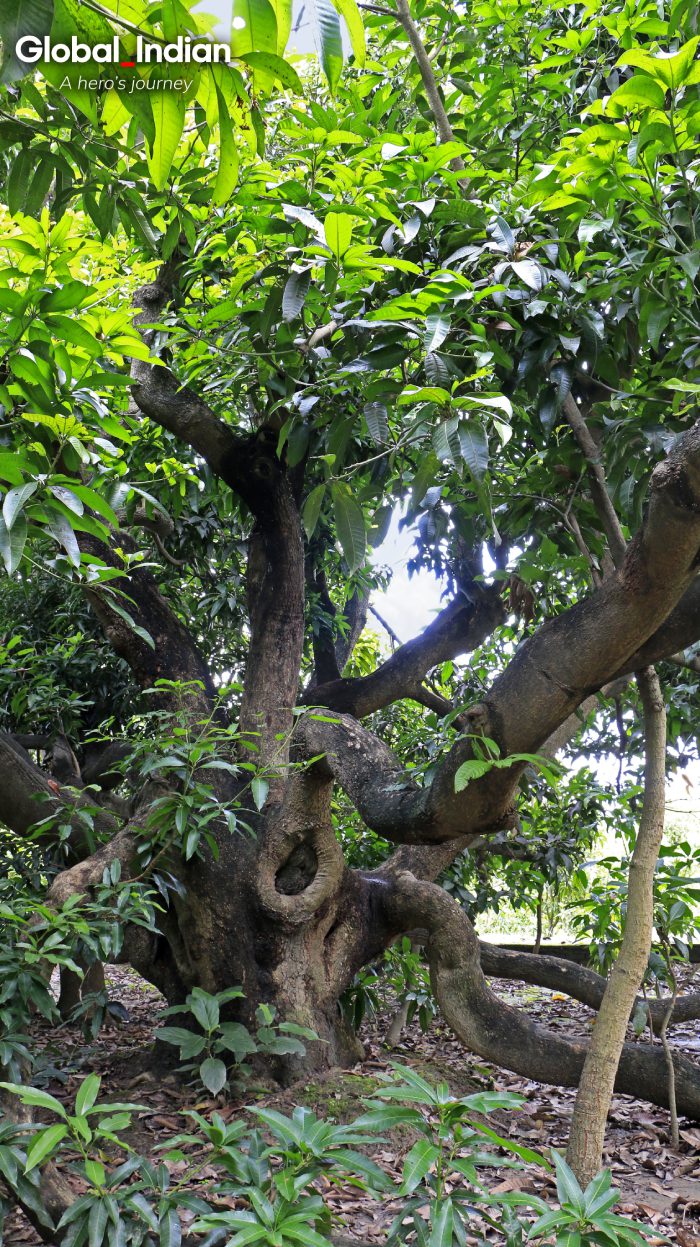 The 120-year-old tree that bears 300 varieties of mango. (Photo: Kinshuk Mehta for Global Indian)[/caption]
The 120-year-old tree that bears 300 varieties of mango. (Photo: Kinshuk Mehta for Global Indian)[/caption]
Marvelling at the tree, one cannot miss the leaves in numerous shapes and colours, an indication of the varieties grafted on the tree. "That's the beauty of the tree," he says, adding, "We slice a wound into a branch and then insert another branch from a different mango tree and tie them together with a help of tape (plastic) until the new tissues start to generate and hold the branches together."
[caption id="attachment_27650" align="aligncenter" width="665"]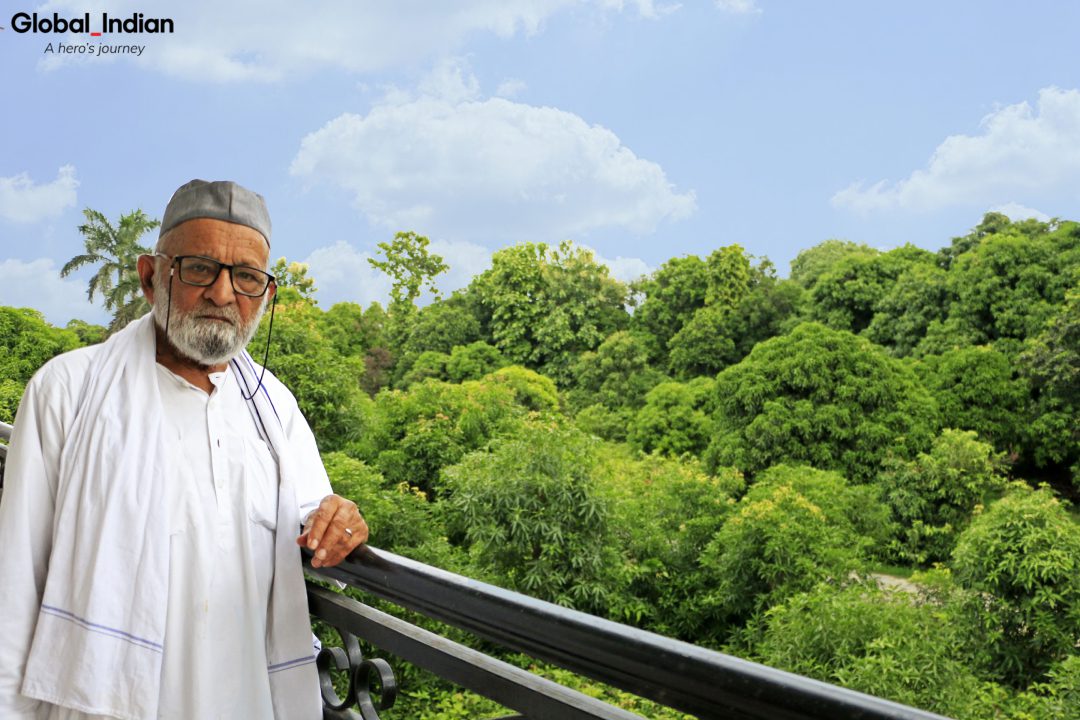 Kaleem Ullah Khan overlooking his orchard. (Photo: Global Indian)[/caption]
Kaleem Ullah Khan overlooking his orchard. (Photo: Global Indian)[/caption]
It is here he finds sukoon - so much that he recently shifted to a house in the orchard to admire his baagecha (orchard) every day. "Standing in the balcony each day, it makes me humble to see this in its entirety. I wish to spend the rest of my years closer to my orchard."
With 300 varieties to his credit, the moniker Mango Man suits him well. However, he reveals that in 1919, Malihabad produced 1300 varieties of mangoes. The zamindars, comprising Thakurs, Shekhs and Pathans, owned over 16,000 bigha (10,000 acres) of land, Khan says. “They would grow mangoes and name the new varieties. Things changed when the zamindari ended. Population increased, residential areas encroached the habitat and the orchards started to shrink," says Khan, adding that Uttar Pradesh is now home to just 600 varieties of mango. Interestingly, India is the biggest producer, consumer and exporter of mangoes in the world. With 40 percent of mangoes produced in India, the country has been exporting the fruit to UAE, Bangladesh, Nepal and the UK. In 2019-2020, India exported 49,658 metric tonne of mangoes to the world for ₹400 crore. "Even the world knows that something is special in aam," smiles Khan who is happy to popularise the fruit across the world with his work.
[caption id="attachment_27649" align="aligncenter" width="507"]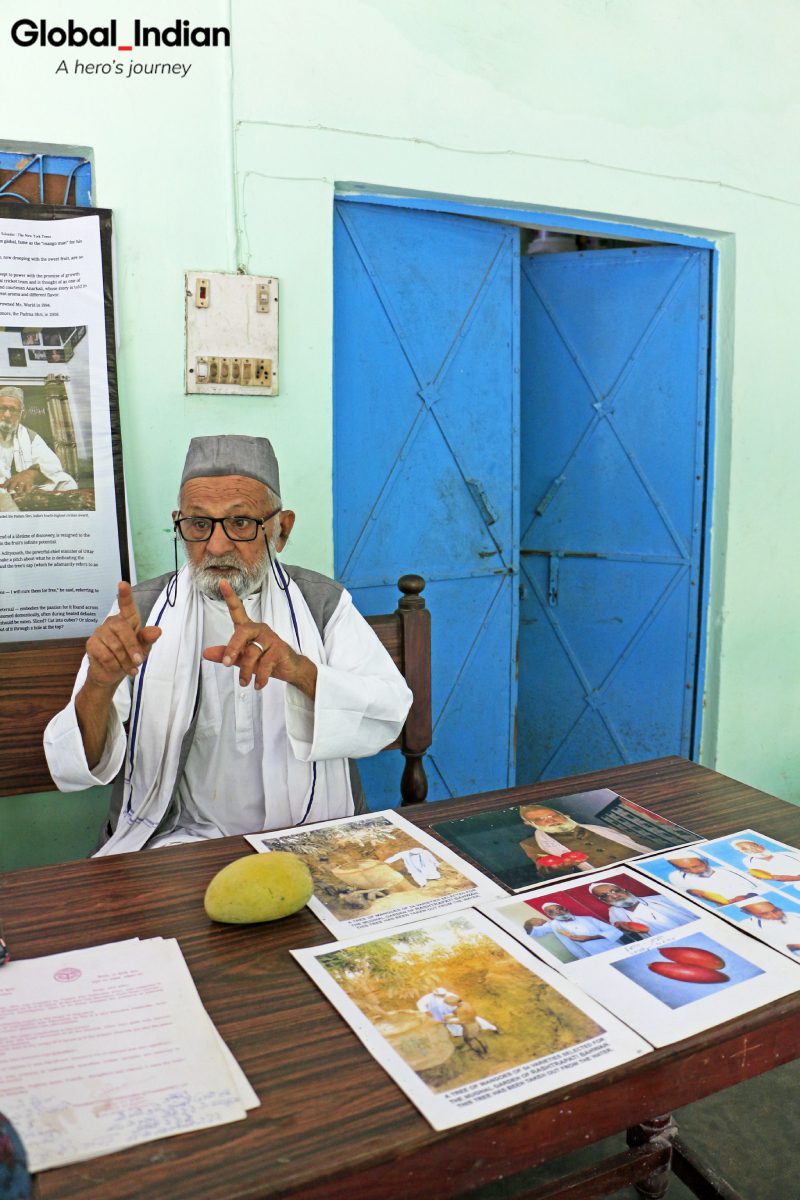 The Mango Man (Photo: Kinshuk Mehta for Global Indian)[/caption]
The Mango Man (Photo: Kinshuk Mehta for Global Indian)[/caption]
The medicinal power of mango flower
The mango is more than a fruit to Khan, who believes in the tree's medicinal power. Referring to the 2014 study by Texas A&M University that provided evidence that mangoes can prevent cancer, Khan says, "I have been telling the govt departments to look into the properties of the flower. You can find medicine for every disease from its flower. Like we humans have qualities, so does the mango. It's a gift from nature - as a fruit to devour and a powerhouse of medicine," says the octogenarian who is disappointed that mango is only known as the "phalon ka raja" (the king of fruits). He presses on, pointing out that the mango tree can cure anything - from cancer to diabetes to impotency. He began thinking on the lines after losing a friend to kidney failure and understood that the mango flower has the qualities to cure any illness. However, he is dismayed that no one is paying heed to the importance of the mango flower as medicine. "I want to give it to the government for free so that it reaches the poor, who need it the most. When I leave this world, I want to leave this gift for the people. This is my purpose."
[caption id="attachment_27647" align="aligncenter" width="740"]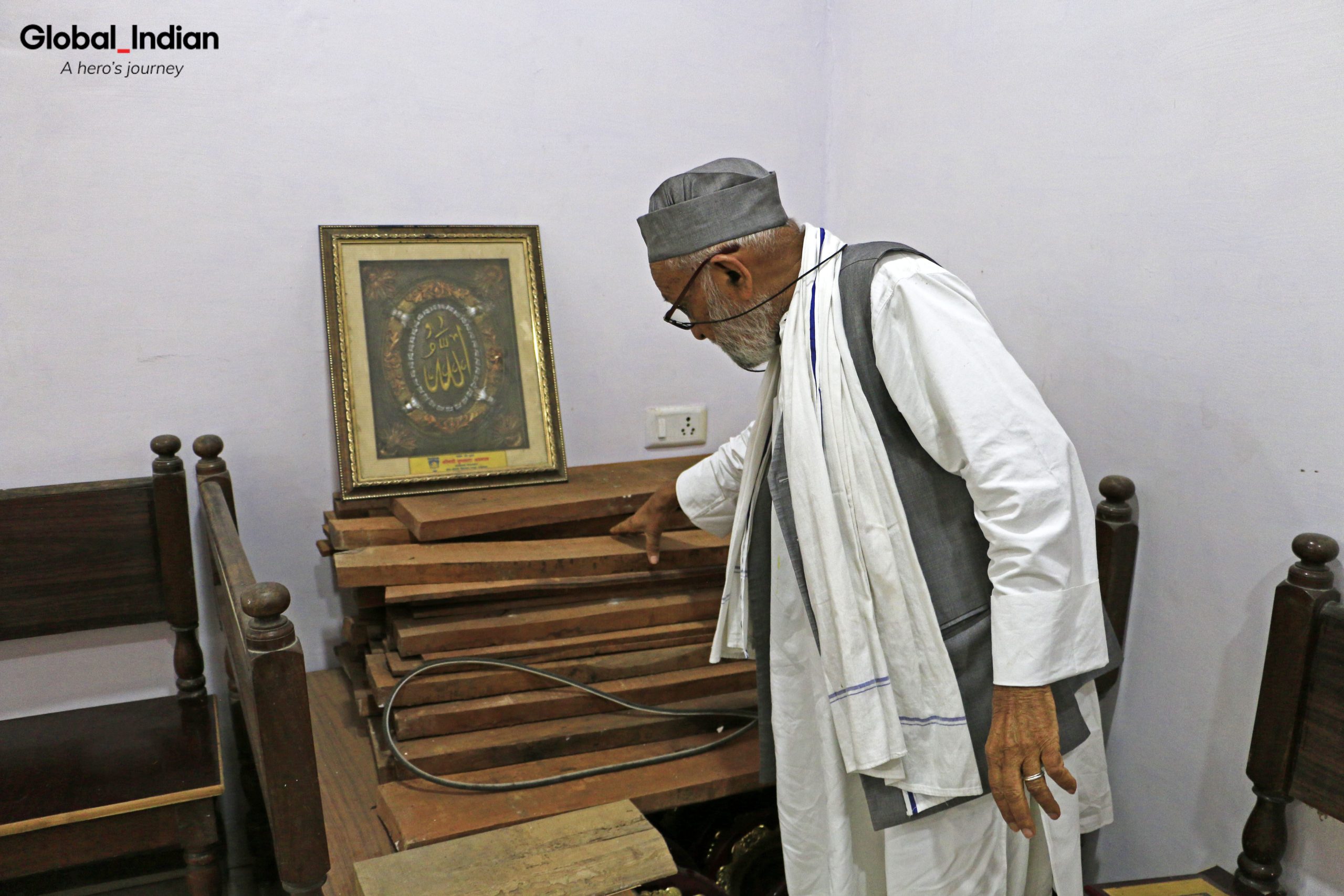 Kaleem Ullah Khan with a stack of mango tree wood. (Photo: Kinshuk Mehta for Global Indian)[/caption]
Kaleem Ullah Khan with a stack of mango tree wood. (Photo: Kinshuk Mehta for Global Indian)[/caption]
At 82, Khan is ready to embrace the final journey and has already piled up a stack of mango tree planks for his coffin - knowing that this passion for mangoes will go to the grave with him. "I often come and look at them, knowing that they will protect me once I am buried. You can see the happiness on my face talking about it because betaji, this is inevitable. So why shouldn't we talk about things that will help the world once I am gone."
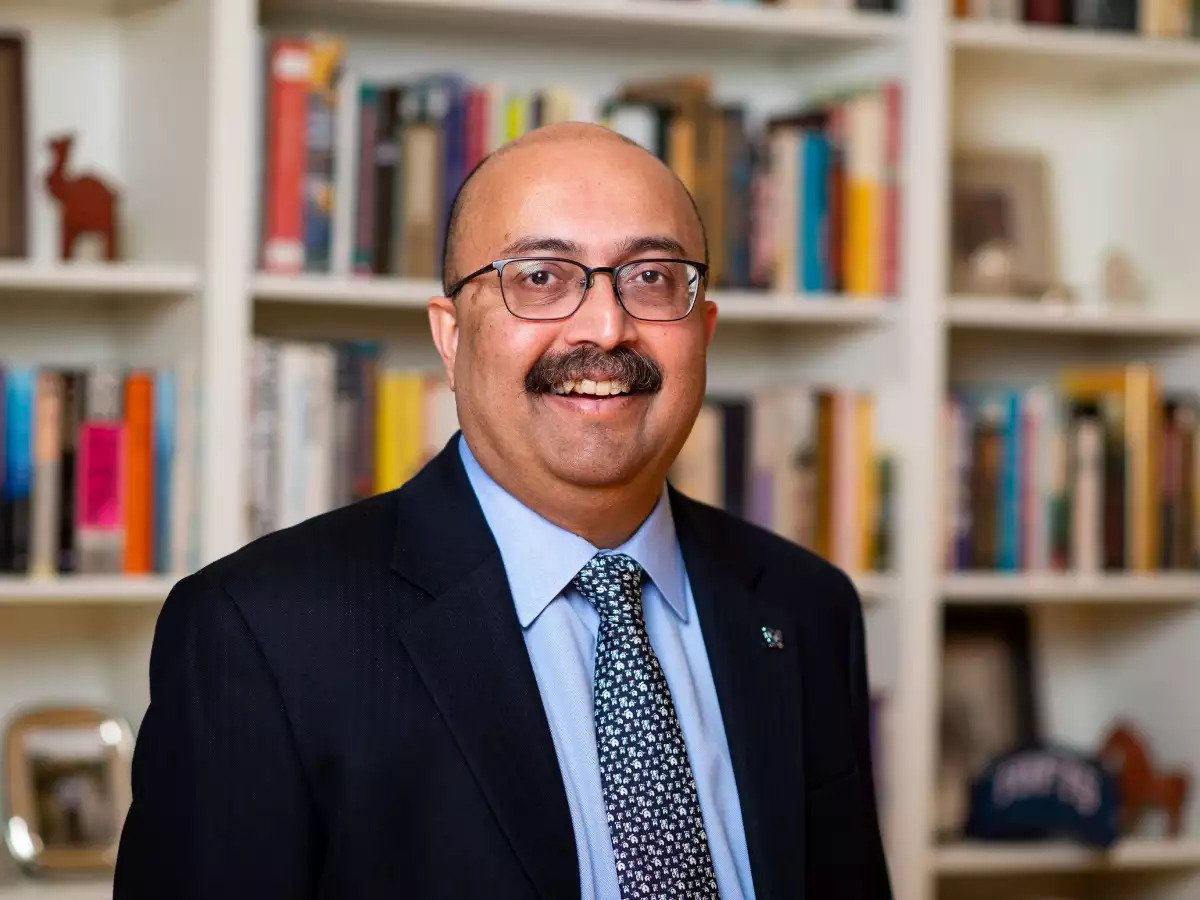
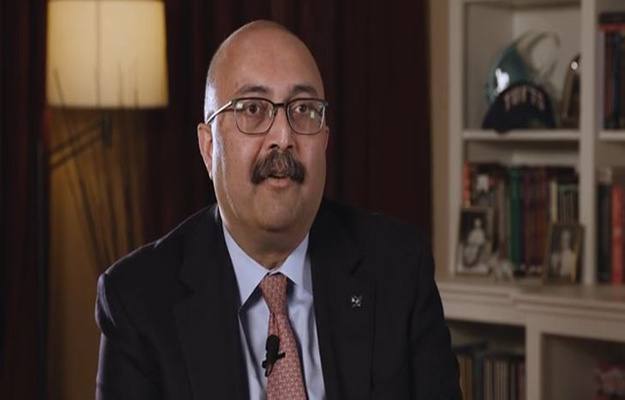

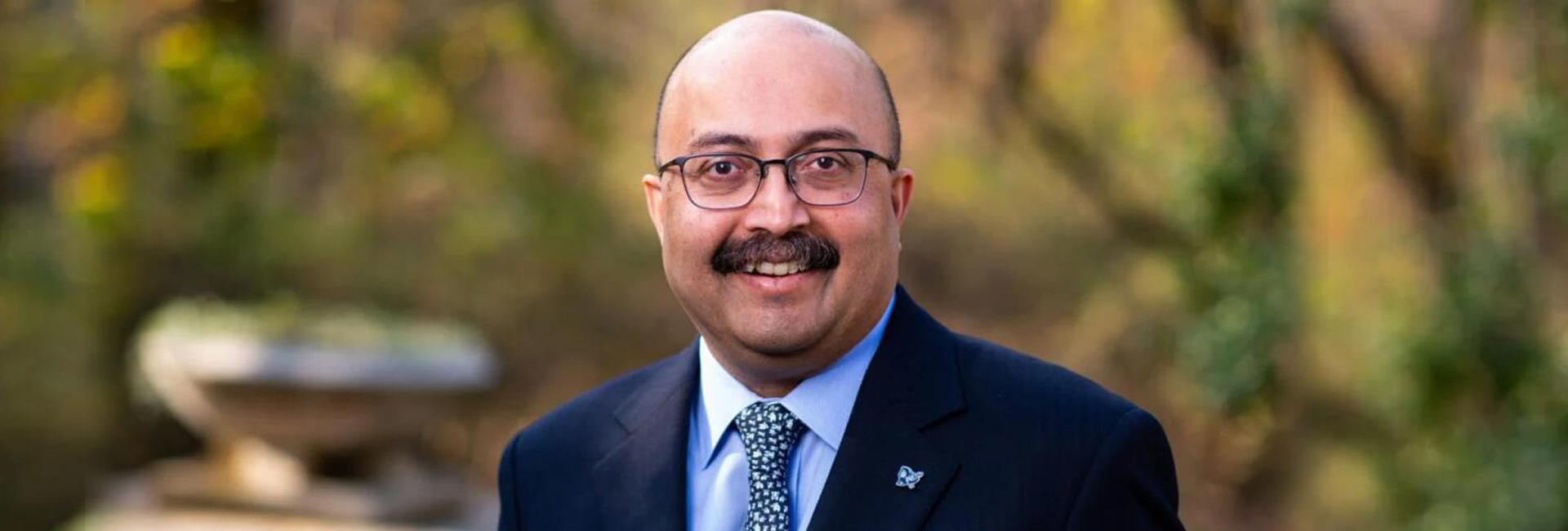

 Kaleem Ullah Khan at his mango orchard in Malihabad. (Photo: Kinshuk Mehta for Global Indian)[/caption]
Kaleem Ullah Khan at his mango orchard in Malihabad. (Photo: Kinshuk Mehta for Global Indian)[/caption] Kaleem Ullah Khan grows 300 varieties of mangoes. (Photo: Kinshuk Mehta for Global Indian)[/caption]
Kaleem Ullah Khan grows 300 varieties of mangoes. (Photo: Kinshuk Mehta for Global Indian)[/caption] Kaleem Ullah Khan in front of his favourite 120-year-old tree. (Photo: Kinshuk Mehta for Global Indian)[/caption]
Kaleem Ullah Khan in front of his favourite 120-year-old tree. (Photo: Kinshuk Mehta for Global Indian)[/caption] Padma Shri Kaleem Ullah Khan has put Malihabad on the global map. (Photo: Kinshuk Mehta for Global Indian)[/caption]
Padma Shri Kaleem Ullah Khan has put Malihabad on the global map. (Photo: Kinshuk Mehta for Global Indian)[/caption] The 120-year-old tree that bears 300 varieties of mango. (Photo: Kinshuk Mehta for Global Indian)[/caption]
The 120-year-old tree that bears 300 varieties of mango. (Photo: Kinshuk Mehta for Global Indian)[/caption] Kaleem Ullah Khan overlooking his orchard. (Photo: Global Indian)[/caption]
Kaleem Ullah Khan overlooking his orchard. (Photo: Global Indian)[/caption] The Mango Man (Photo: Kinshuk Mehta for Global Indian)[/caption]
The Mango Man (Photo: Kinshuk Mehta for Global Indian)[/caption] Kaleem Ullah Khan with a stack of mango tree wood. (Photo: Kinshuk Mehta for Global Indian)[/caption]
Kaleem Ullah Khan with a stack of mango tree wood. (Photo: Kinshuk Mehta for Global Indian)[/caption]
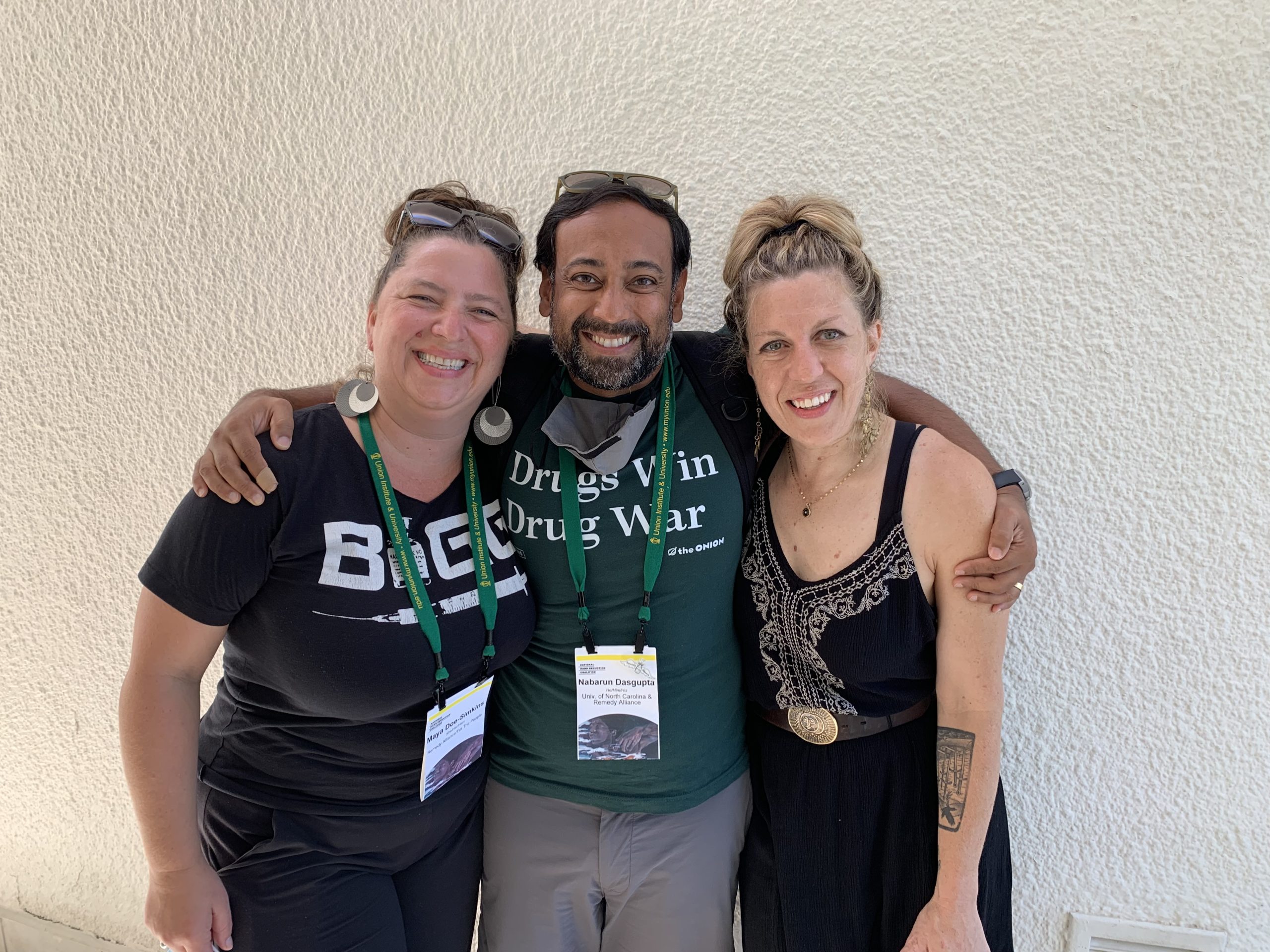 Dr. Dasgupta with his team[/caption]
Dr. Dasgupta with his team[/caption]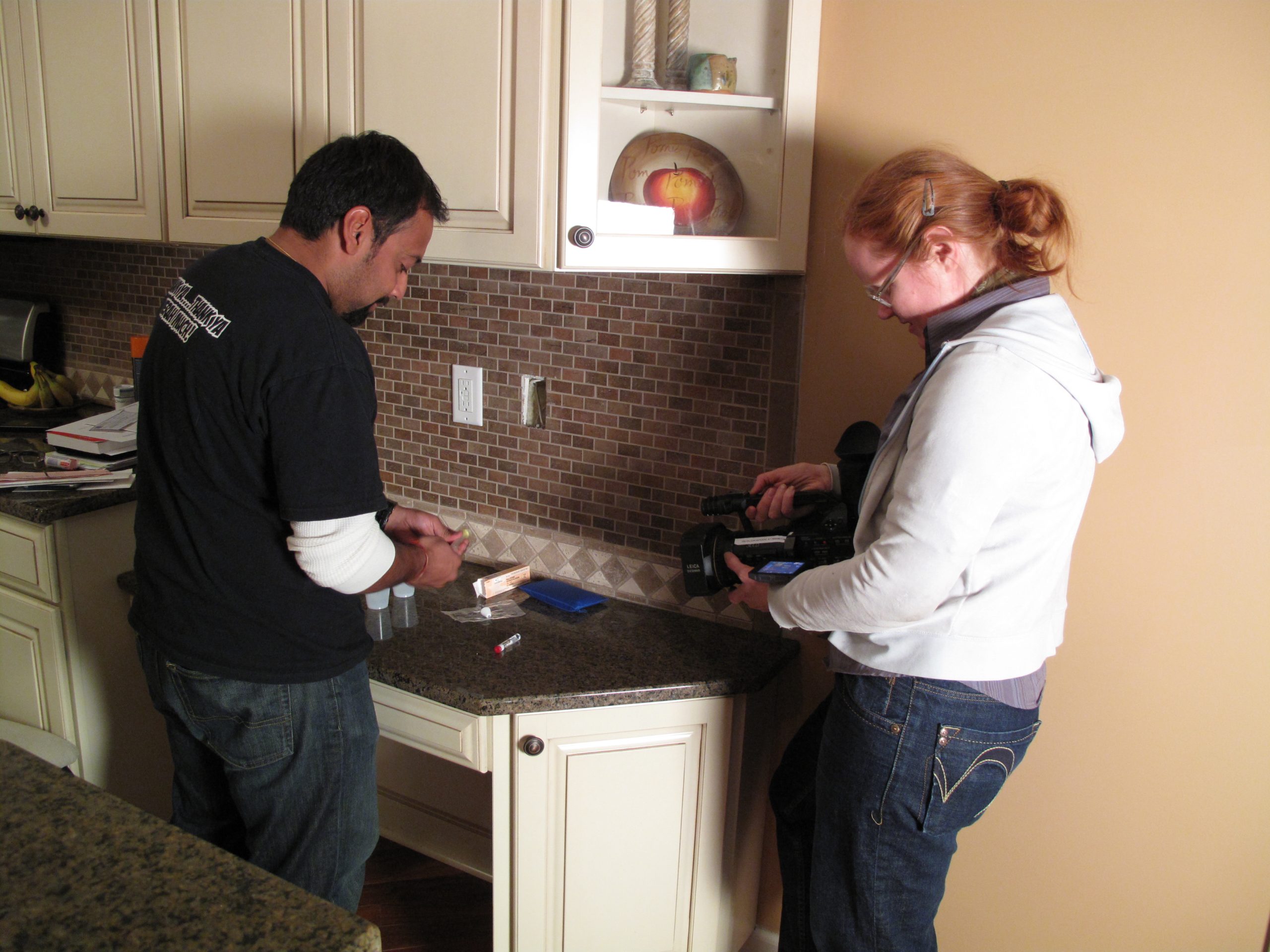 Dr. Dasgupta assembling overdosing prevention kits in Wilkes County, North Carolina[/caption]
Dr. Dasgupta assembling overdosing prevention kits in Wilkes County, North Carolina[/caption]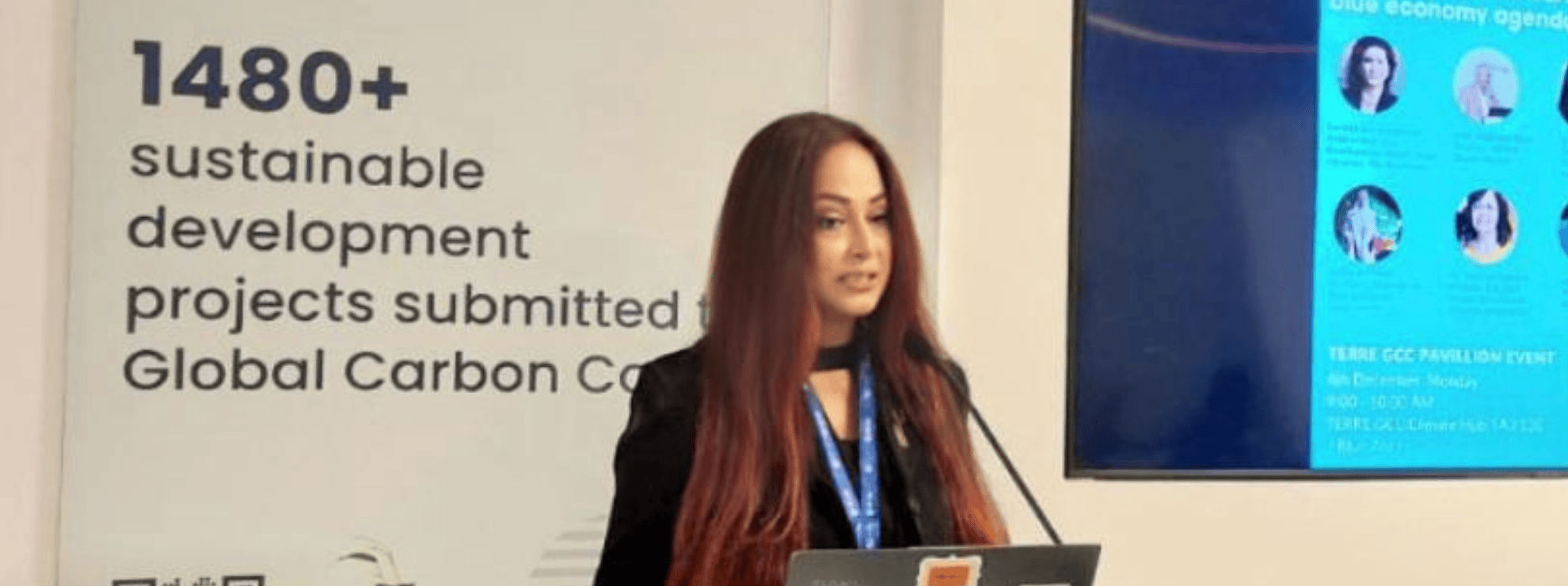
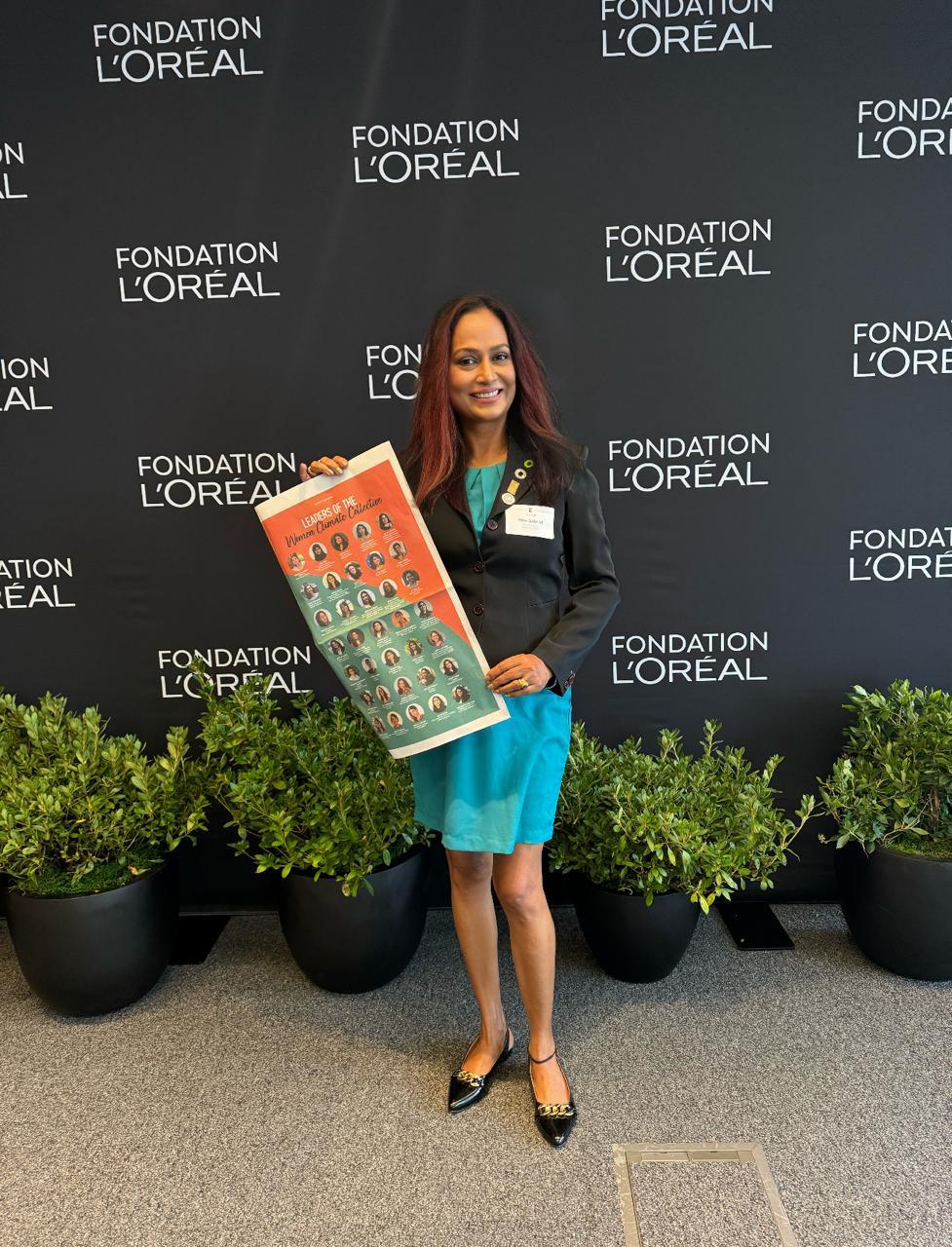 Elsie Gabriel[/caption]
Elsie Gabriel[/caption]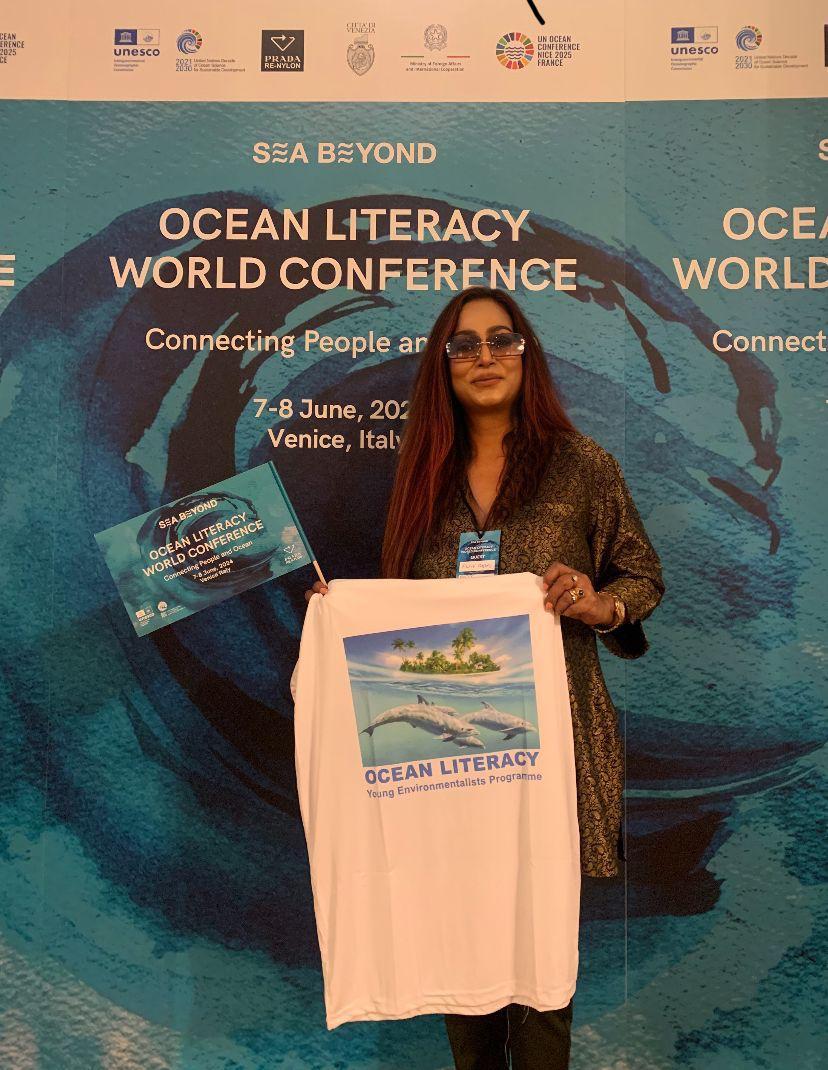
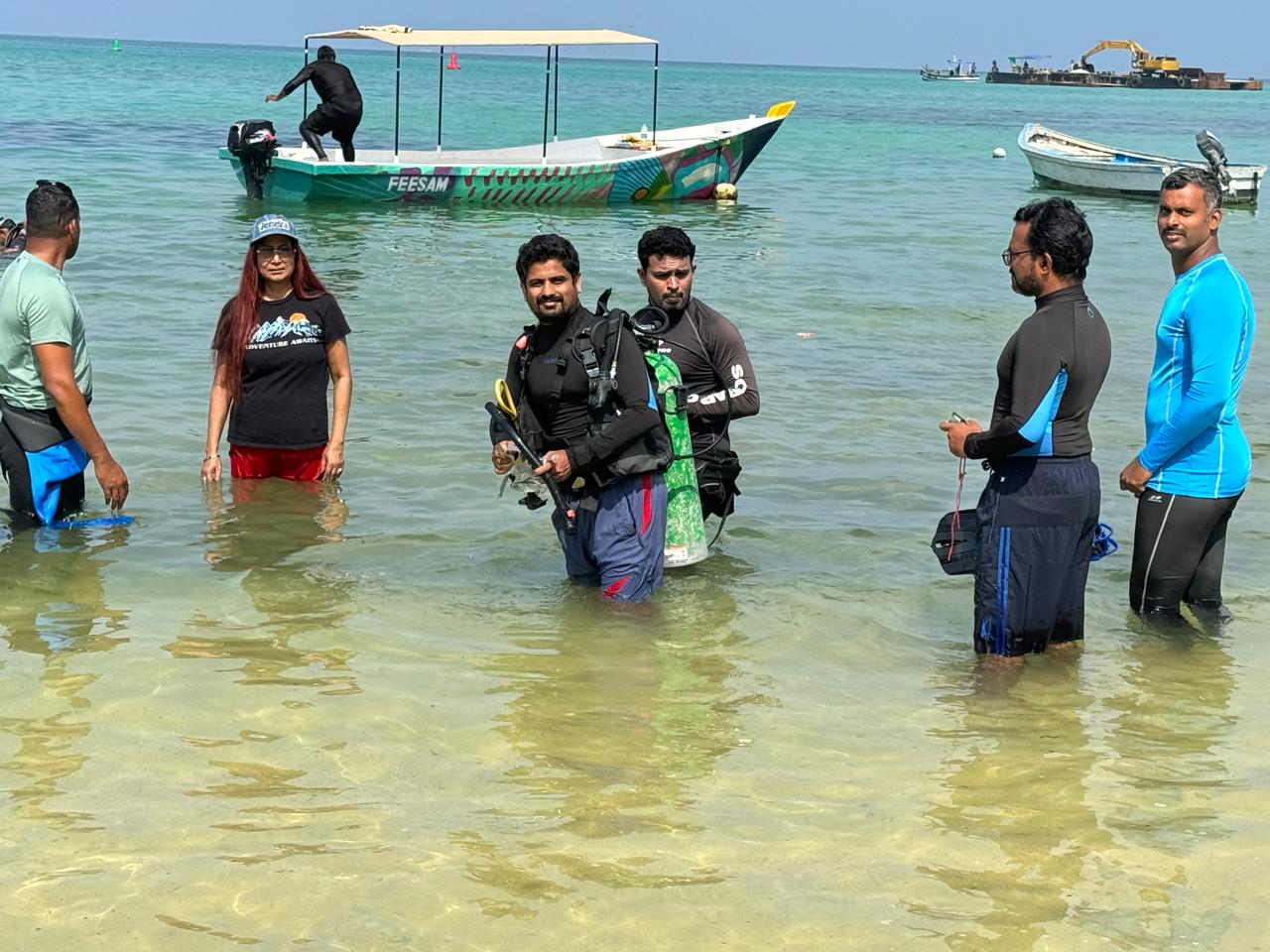 Elsie has dived all over the world, and was inducted into the Women Divers Hall of Fame as an Associate Member in 2023[/caption]
Elsie has dived all over the world, and was inducted into the Women Divers Hall of Fame as an Associate Member in 2023[/caption]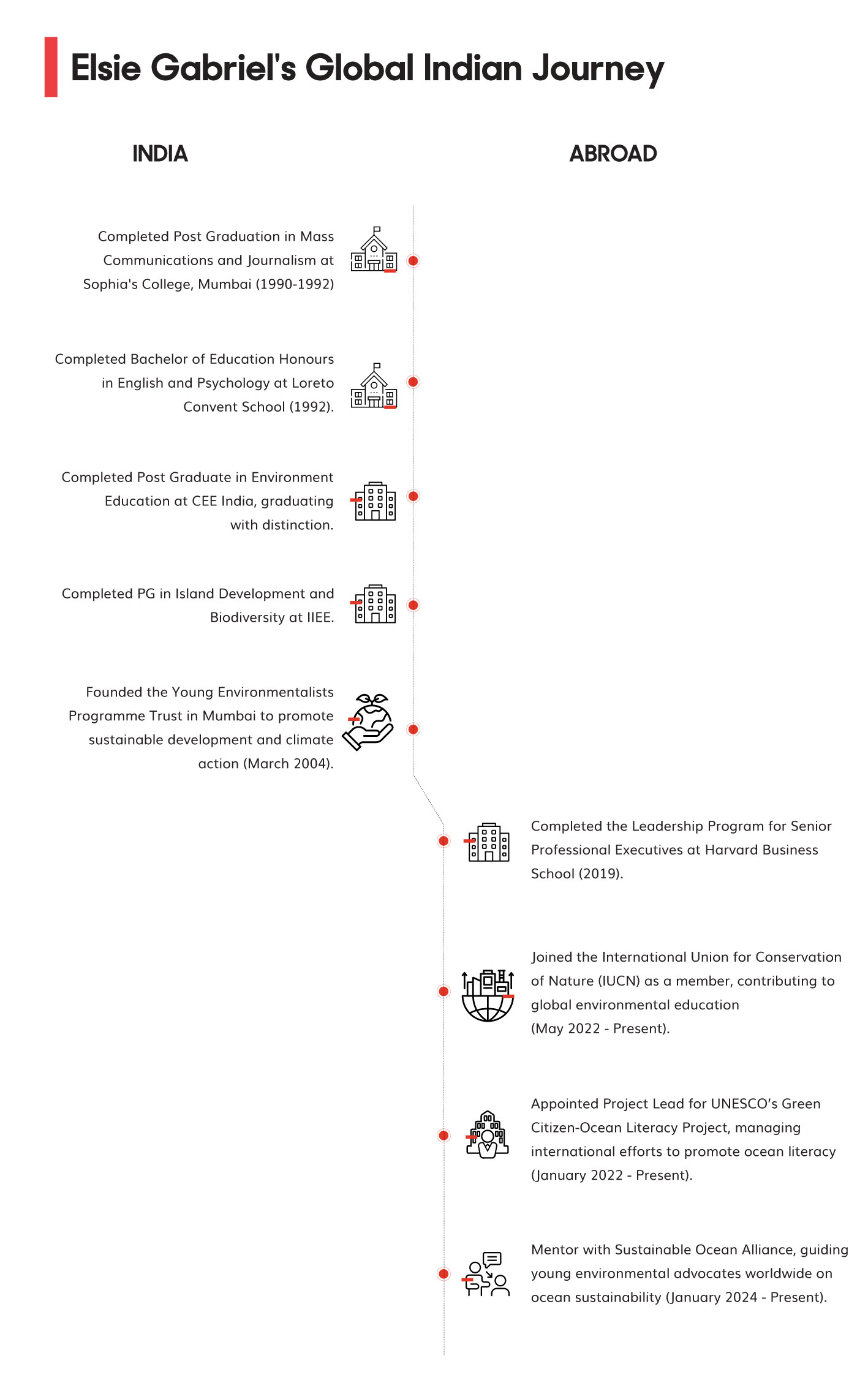
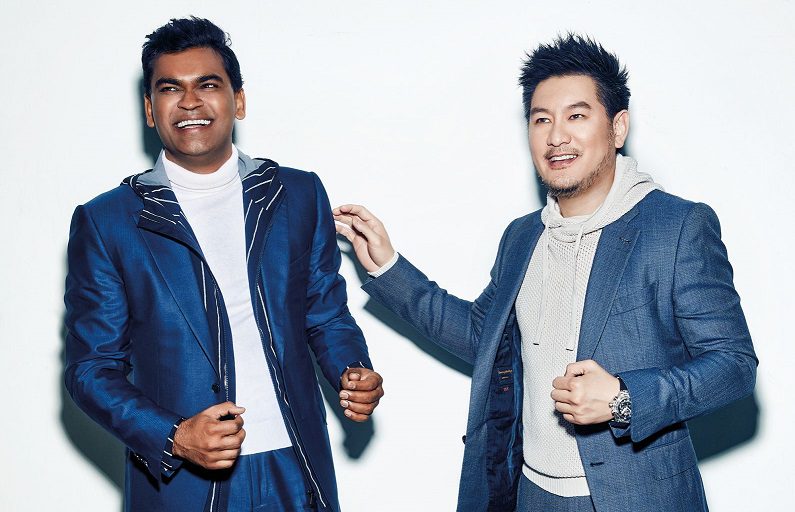
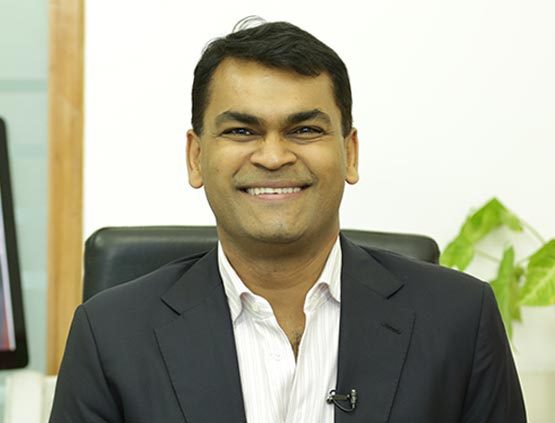 Saurabh Mittal[/caption]
Saurabh Mittal[/caption]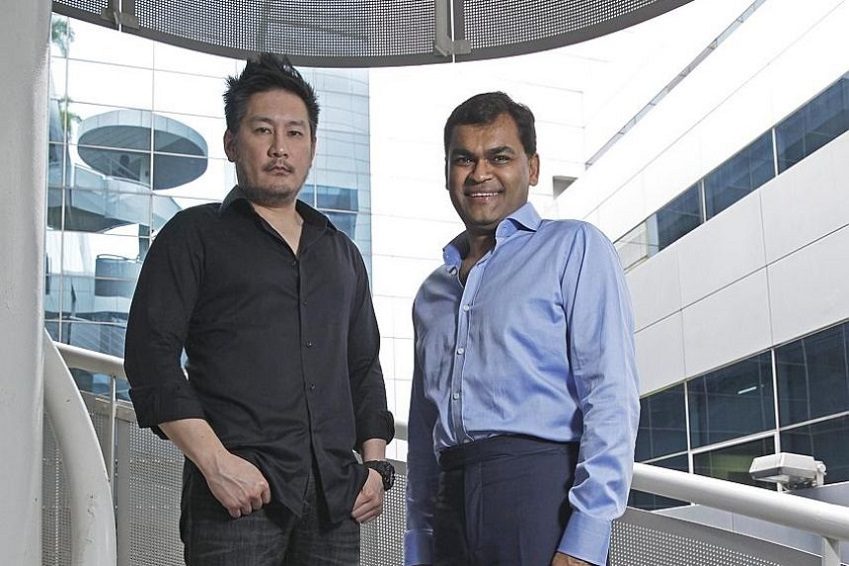 Saurabh Mittal with Chatri Sityodtong[/caption]
Saurabh Mittal with Chatri Sityodtong[/caption]
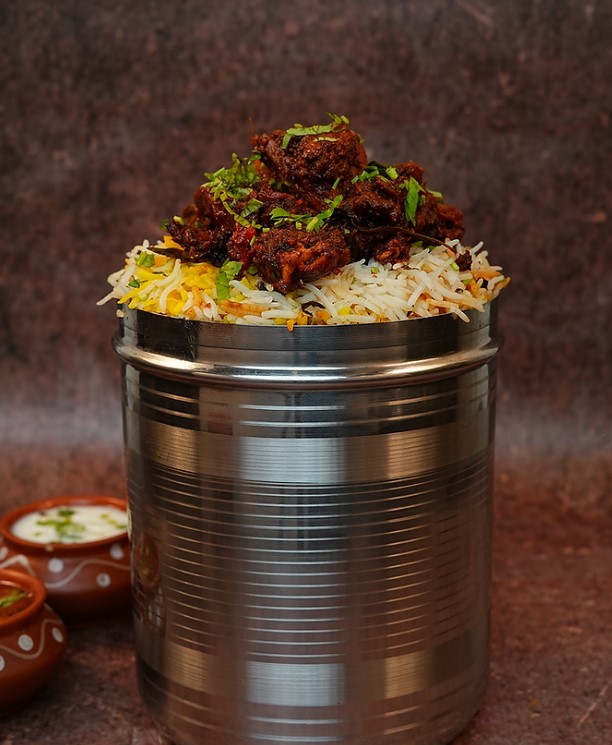 Neos Biryani.[/caption]
Neos Biryani.[/caption]